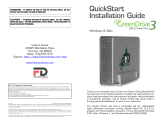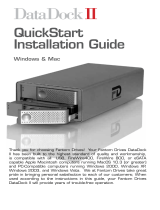
9
Troubleshooting
When switching Patches in Patch mode, the
volume and other parameters set with Control
Changes end up being reset.
Set parameter (SYSTEM/General) to “ON.” Even once they
have switched Patches, Control Change messages that have
been received are carried forward, so even when switching a Patch
whose level is turned all the way down by a Control Change volume
message, the level remains unchanged.
The sound stops when the internal Wave
0887:DC is selected as the Tone for the Patch.
Check the structure of the patch. Wave 0887:DC is a Wave
composed only of DC constituents. When this Wave is
selected for an initialized Patch and then played, after an initial click
sound at the beginning, the is no sound. If this Wave is used for W2
in Structure Type 2 or later, the Wave level set for W1 is raised by
W2, causing the upper limit to be exceeded. As a result, the sound
may cease.
If the Tone Delay time value is set to the note,
then does the delay time not change beyond a
fixed length when the tempo is slowed down?
There is a maximum permissible value for the Delay Time
parameter (PATCH/General). So, if the time setting is
specified in terms of a note value, and the tempo is slowed down,
this maximum permissible value will be reached, and it cannot be
increased further. The upper time limit for each is the maximum
value that can be set other than the numerical value for the beat.
Even when I set the Pan for a Patch completely
to one side, sound still comes from the other
channel...
The Fantom's internal effects are in stereo, so if you have
effects applied to a Patch, even if the Pan is set all the way to
one side, you will still be able to hear sounds of the effect component
from the other channel.
Sometimes, when playing legato, the pitch
won't rise. Why is this?
When the Legato Switch parameter (PATCH/General) is
“ON,” and the Legato Retrigger parameter (PATCH/General)
is “OFF,” and you hold down keys in the high register to play legato,
the upper pitch limit of the wave may be exceeded, so that the pitch
does not rise as far as you expect, but will stop rising at a certain
point. Additionally, if differing upper pitch limits are used for the
waves of a Patch that uses multiple tones, it may stop being heard in
MONO. When making large pitch changes, set the Legato Retrigger
parameter to “ON.”
The notes sound strange in the upper registers
of the keyboard.
Sometimes when playing the keys in the upper part of the
Fantom's keyboard, the sound may stop, or the pitch may stop
rising; or with certain keys, there may be intermittent noise. This
occurs mainly when the Fantom's upper pitch limit is exceeded, so
this issue doesn't arise in the ranges normally used. But, in any case,
it does not indicate a malfunction.
Although the same Patch is selected, it sounds
different when I listen to it in the
Performance/Multitimbre.
In Performance mode and Multitimbre mode, the parameters
of each part of the performance/multitimbre can apply
further modification to parameters such as pan, octave, and filter,
relative to the settings specified by the patch. Thus, Patches in a
Performance may sound different than they do when heard in Patch
mode. To return these settings to their initial conditions, select the
Patch after execute Initialize Temporary for the Performance/
Multitimbre.
Additionally, although a Patch may comprise tones created with the
use of the multi-effects, the multi-effects used in the Performance/
Multitimbre may differ from the multi-effects selected by the Patch.
Check the multi-effect settings of the performance/multitimbre.
Also do the same for the Chorus and Reverb settings.
Issues Related to Effects
Effects not applied.
Check the following points.
• The “MFX,” “CHO,” or “REV” effect switches located in the
upper part of the PLAY screen may have been turned off.
Turn them on.
• Are the various effect settings correct? (Owner’s Manual; p. 165–
p. 174)
• If the send level of each effect is set to 0, the effect will not be
applied. Check the settings.
• Even with send levels to each effect set at 0, effects are not
applied if the Multi-effects Dry Send Level, the Chorus Level ,
or the Reverb Level is set to 0. Check each setting.
• If Output Assign is set to other than “MFX,” the Multi-effects
sound will not be output.
• If Output Assign is set to “PATCH” for each Part of the
Performance, the sound will be output according to the
Output Assign settings of the Patch (for each Tone) which is
assigned to those Parts. This means that if Output Assign for
the Patch (each Tone) is set to other than “MFX,” the Multi-
effects sound will not be output.






















